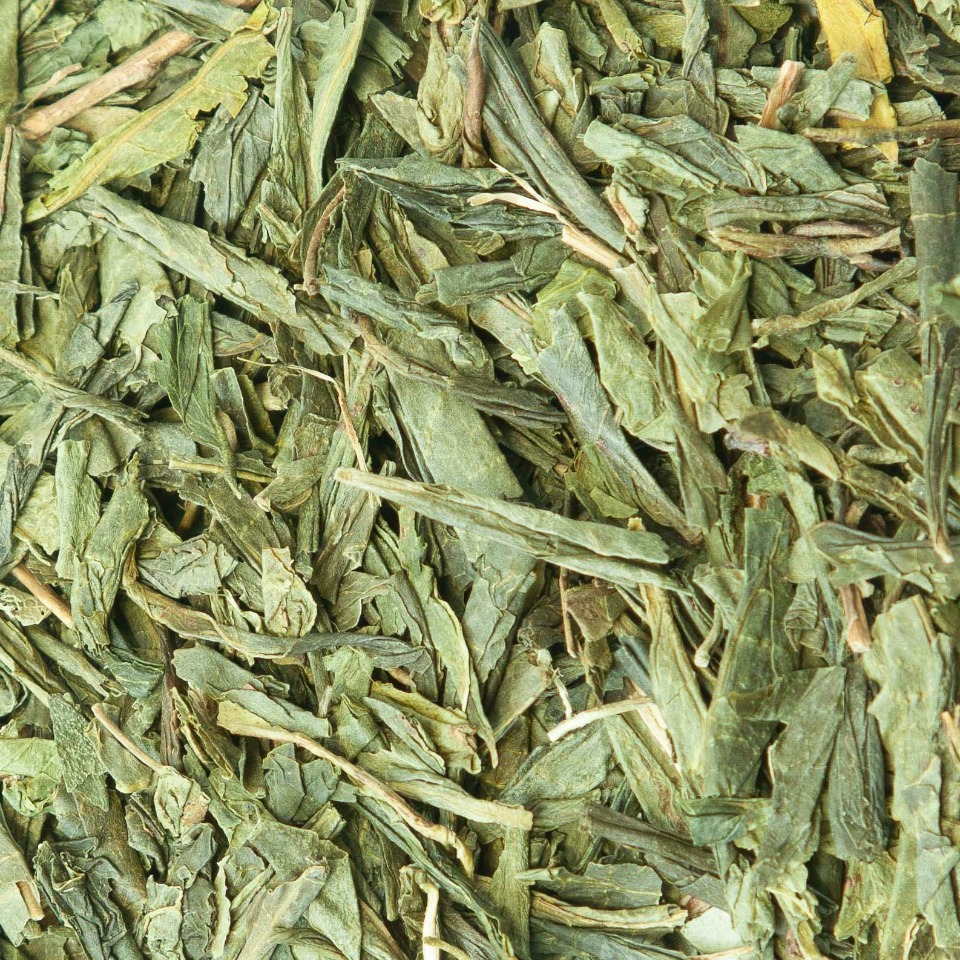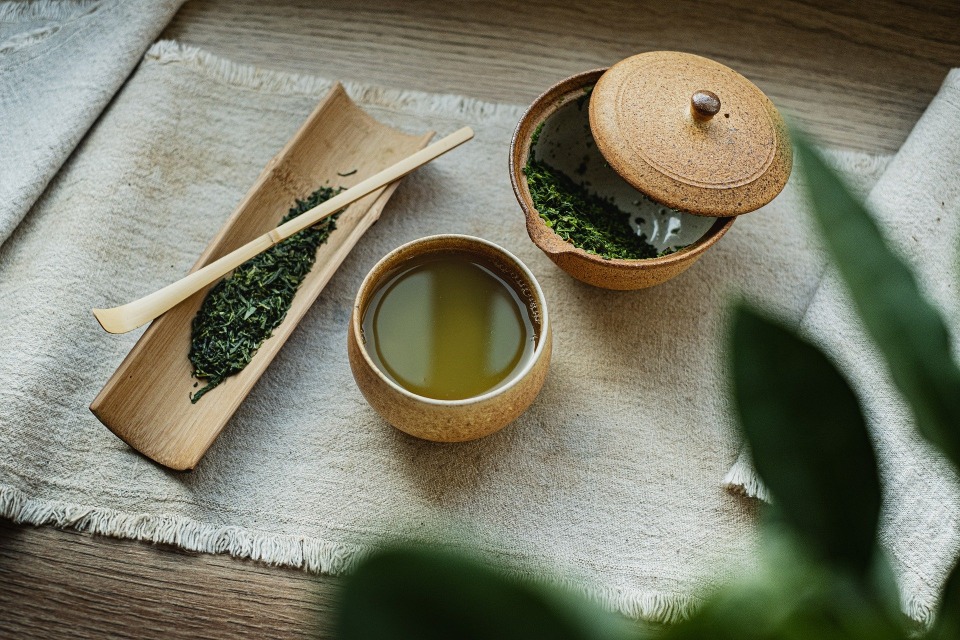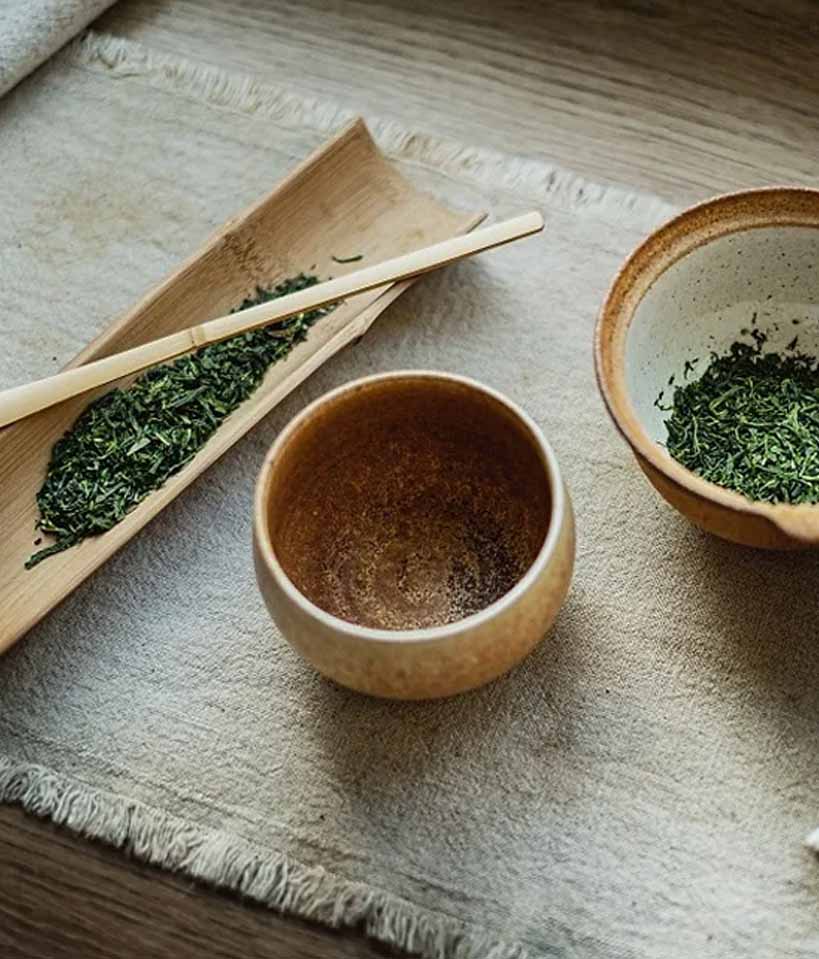In the 18th century, the production of a new style of green tea with a balance between bitterness and sweetness was created. This new tea was sencha. It became wildly popular quickly and is still the most popular tea grown and consumed in Japan today. In fact across Japan, more sencha tea is consumed each day than water! Breakfast time, break time, lunchtime, afternoon walk home time, supper time, evening wind down time: there isn’t a time in Japan where sencha doesn’t provide the perfect tea accompaniment.
As the popularity of sencha has grown, the types of sencha have grown.
All tea is grown from the Camellia sinensis plant. Where and how the leaves of this plant are grown along with when they are harvested and how they are then processed is what creates each unique type of tea.
Sencha like most Japanese teas are grown in cool foggy mountain slopes. Unlike matcha which is grown in the shade, sencha is grown in direct sunlight.
Most sencha is a first or second flush tea, meaning it is picked from April through June. The first flush is the first set of leaves a plant produces in the spring. The second flush of leaves is picked in the early summer months of June or July. Sencha tea leaves are picked from the upper younger shoots. Lower shoots on the plant are often picked for bancha tea.
In Japan, after the leaves are picked, they are steamed to stop any oxidation. This steaming process is where sencha is differentiated. Called “mushi”, how deeply the tea is steamed determines what kind of sencha is produced.
- Shincha: which means new tea is harvested right at the beginning of the new growing season. Shincha is a highly cherished tea in Japan. It is unusual to find it exported outside of Japan.
- Asamushi: This type of sencha tea is steamed very quickly (no more than 30 seconds). This lighter steam results in a lighter more delicate tea.
- Chumushi: The steaming period of 30 – 60 seconds creates a refreshing tea with a very green aroma.
- Fukamushi: This type of sencha is steamed for more than 60 seconds giving it a bold flavor and a dark green color.
- Powdered: In Japan, powdered sencha is a popular ingredient for baked goods.
After sencha is steamed, the leaves are then rolled and dried. The rolling process gives sencha leaves their characteristic needle shape. The rolling process also releases oils in the leaves intensifying their flavor.

Our favorite way to brew sencha is 1 teaspoon of leaves to 8 ounces of 170° water for 2 minutes. We feel this low and quick brewing time allows the sweetness of sencha to shine through.
Although bright green notes are present in all senchas, not all senchas taste the same. Its flavor varies greatly depending on where it’s grown, when it’s harvested, and how it’s steamed. And everyone experiences teas differently! During our tea tastings, participants have tasted notes as varied as grass, spinach, raspberries, kiwi, kale, and even brussel sprouts in the same sencha tea. What do you taste in your sencha tea? Feel free to leave a comment letting us know your sencha experience!

SpiceTopia’s Sencha is fresh and bright with brothy vegetal notes.

A Story of Tea: Japanese Sencha
Note
Sources:
Heiss, Mary Lou; Heiss, Robert J. (2007). The Story of Tea: A Cultural History and Drinking Guide
Tyas Sōsen (2019). The Story of Japanese Tea: a broad outline of its cultivation, manufacturing, history and cultural values. Japan's Modern Tea Culture


